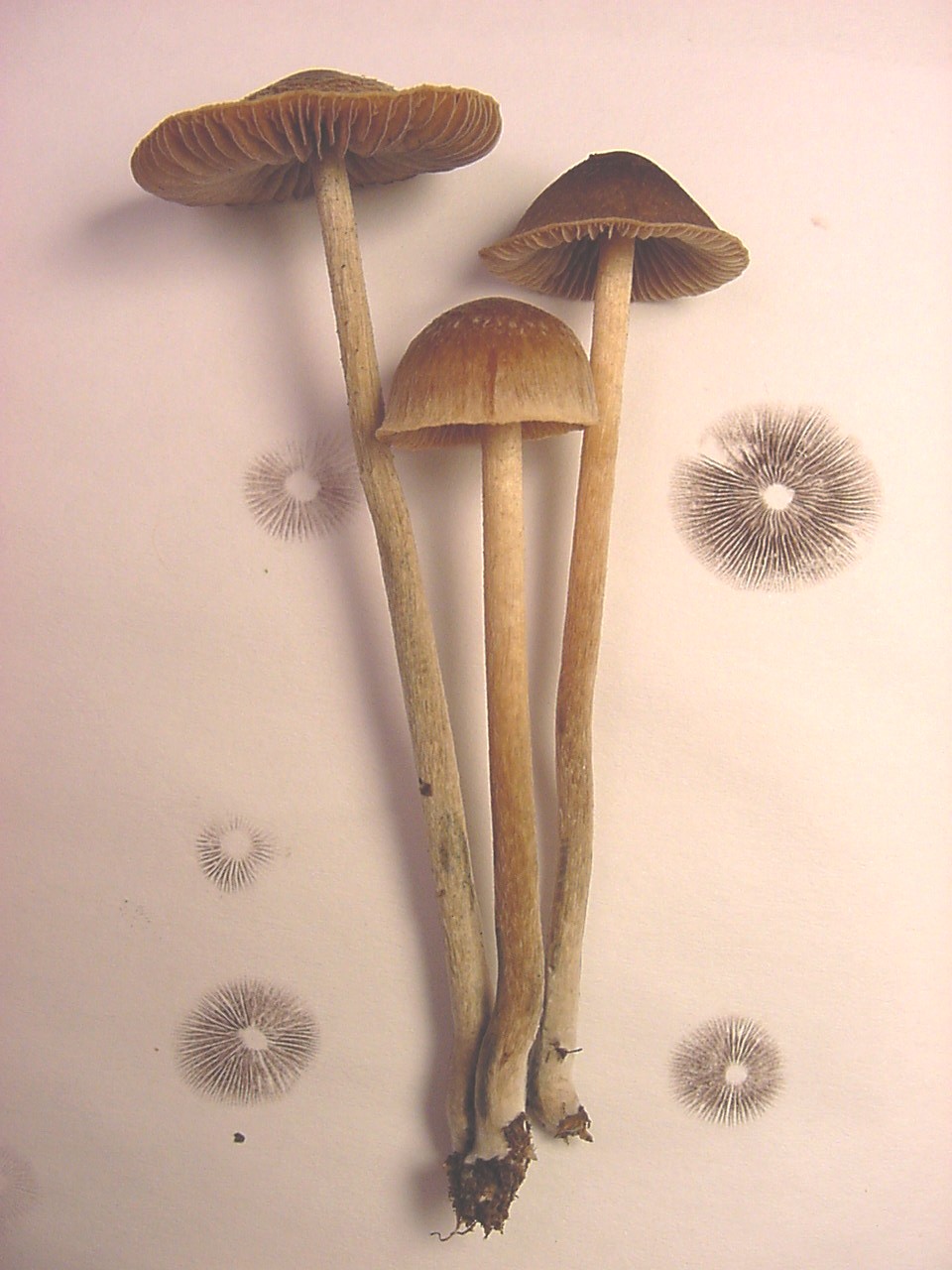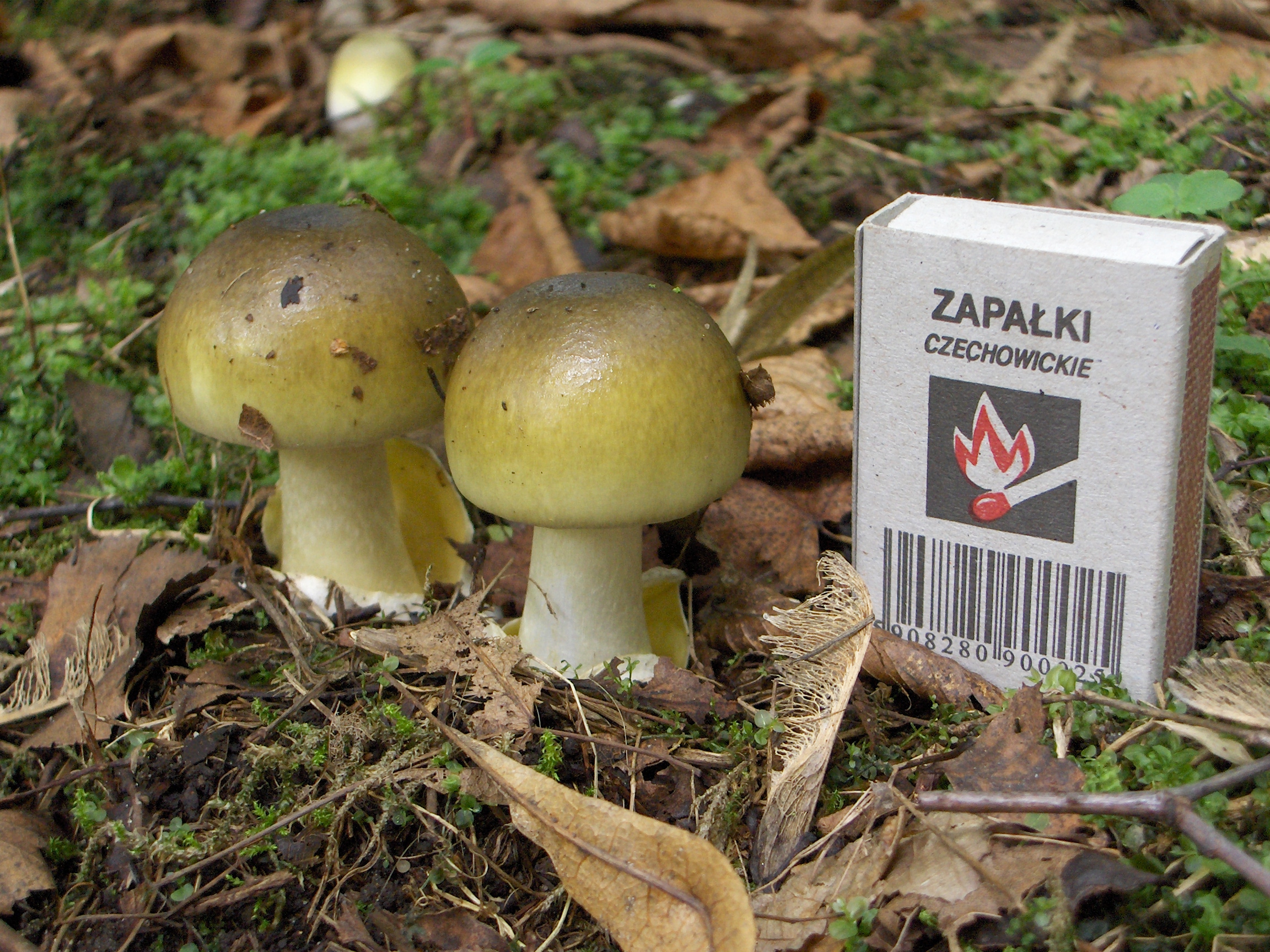|
Pholiotina Rugosa
''Pholiotina rugosa'' is a common mushroom which is widely distributed and especially common in the Pacific Northwest. It grows in woodchips, flowerbeds and compost. It has been found in Europe, Asia and North America. It contains the same mycotoxins as the death cap. It is more commonly known as ''Conocybe filaris'' as this is the name it is likely to appear under in field guides. However, ''Conocybe filaris'' is a junior synonym of ''Pholiotina rugosa''. ''Pholiotina rugosa'' has also been placed in the genus ''Conocybe'', but its morphology and a 2013 molecular phylogenetics study place it in the genus ''Pholiotina''. '' Pholiotina fimicola'', which grows on dung and rich soil in North America, is a possible synonym. '' Pholiotina arrhenii'' has also been considered a possible synonym, but a molecular phylogenetics study found it to be a distinct species. Description Canocybe filaris has a cap which is conical, expanding to flat, usually with an umbo. It is less than 3 ... [...More Info...] [...Related Items...] OR: [Wikipedia] [Google] [Baidu] |
Fungi
A fungus ( : fungi or funguses) is any member of the group of eukaryotic organisms that includes microorganisms such as yeasts and molds, as well as the more familiar mushrooms. These organisms are classified as a kingdom, separately from the other eukaryotic kingdoms, which by one traditional classification include Plantae, Animalia, Protozoa, and Chromista. A characteristic that places fungi in a different kingdom from plants, bacteria, and some protists is chitin in their cell walls. Fungi, like animals, are heterotrophs; they acquire their food by absorbing dissolved molecules, typically by secreting digestive enzymes into their environment. Fungi do not photosynthesize. Growth is their means of mobility, except for spores (a few of which are flagellated), which may travel through the air or water. Fungi are the principal decomposers in ecological systems. These and other differences place fungi in a single group of related organisms, named the ''Eumycota'' (''t ... [...More Info...] [...Related Items...] OR: [Wikipedia] [Google] [Baidu] |
Mycotoxin
A mycotoxin (from the Greek μύκης , "fungus" and τοξίνη , "toxin") is a toxic secondary metabolite produced by organisms of kingdom Fungi and is capable of causing disease and death in both humans and other animals. The term 'mycotoxin' is usually reserved for the toxic chemical products produced by fungi that readily colonize crops. Examples of mycotoxins causing human and animal illness include aflatoxin, citrinin, fumonisins, ochratoxin A, patulin, trichothecenes, zearalenone, and ergot alkaloids such as ergotamine. One mold species may produce many different mycotoxins, and several species may produce the same mycotoxin. Production Most fungi are aerobic (use oxygen) and are found almost everywhere in extremely small quantities due to the diminute size of their spores. They consume organic matter wherever humidity and temperature are sufficient. Where conditions are right, fungi proliferate into colonies and mycotoxin levels become high. The reason for the product ... [...More Info...] [...Related Items...] OR: [Wikipedia] [Google] [Baidu] |
Psilocybe
''Psilocybe'' ( ) is a genus of gilled mushrooms, growing worldwide, in the family Hymenogastraceae. Most or nearly all species contain the psychedelic compounds psilocybin and psilocin. Taxonomy Taxonomic history A 2002 study of the molecular phylogeny of the agarics indicated that the genus ''Psilocybe'' as then defined was polyphyletic, falling into two distinct clades that are not directly related to each other. The blue-staining hallucinogenic species constituted one clade and the non-bluing species the other. The previous type species of the genus, ''Psilocybe '' (now Deconica montana), was in the non-bluing clade, but in 2010 the type species was changed to '' P. semilanceata'', a member of the bluing clade. A 2006 molecular phylogenetic study of the Agaricales by Matheny and colleagues, further demonstrated the separation of the bluing and non-bluing clades of ''Psilocybe'' in a larger, strongly supported phylogenetic tree of the Agaricales. ''Psilocybe'' had ... [...More Info...] [...Related Items...] OR: [Wikipedia] [Google] [Baidu] |
Lepiota
''Lepiota'' is a genus of gilled mushrooms in the family Agaricaceae. All ''Lepiota'' species are ground-dwelling saprotrophs with a preference for rich, calcareous soils. Basidiocarps (fruit bodies) are agaricoid with whitish spores, typically with scaly caps and a ring on the stipe. Around 400 species of ''Lepiota'' are currently recognized worldwide. Many species are poisonous, some lethally so. Taxonomy History ''Agaricus'' section ''Lepiota'' was originally published in 1797 by South African-born mycologist Christian Hendrik Persoon. It was subsequently raised to the rank of genus by Samuel Frederick Gray. As originally conceived, the genus was a mix of agarics with rings on their stems, including species now placed in ''Armillaria'', ''Cortinarius'', and ''Pholiota''. In 1822, however, the influential Swedish mycologist Elias Magnus Fries restricted ''Lepiota'' to white-spored, ringed agarics. Based on macro- and micromorphology, later authors gradually refined the gener ... [...More Info...] [...Related Items...] OR: [Wikipedia] [Google] [Baidu] |
Amanita
The genus ''Amanita'' contains about 600 species of agarics, including some of the most toxic known mushrooms found worldwide, as well as some well-regarded edible species. This genus is responsible for approximately 95% of the fatalities resulting from mushroom poisoning, with the death cap accounting for about 50% on its own. The most potent toxin present in these mushrooms is α-Amanitin. The genus also contains many edible mushrooms, but mycologists discourage mushroom hunters, other than experts, from selecting any of these for human consumption. Nonetheless, in some cultures, the larger local edible species of ''Amanita'' are mainstays of the markets in the local growing season. Samples of this are ''Amanita zambiana'' and other fleshy species in central Africa, ''Amanita basii, A. basii'' and similar species in Mexico, ''Amanita caesarea, A. caesarea'' and the "Blusher" ''Amanita rubescens'' in Europe, and ''Amanita chepangiana, A. chepangiana'' in South-East Asia. Other s ... [...More Info...] [...Related Items...] OR: [Wikipedia] [Google] [Baidu] |
Basidiospore
A basidiospore is a reproductive spore produced by Basidiomycete fungi, a grouping that includes mushrooms, shelf fungi, rusts, and smuts. Basidiospores typically each contain one haploid nucleus that is the product of meiosis, and they are produced by specialized fungal cells called basidia. Typically, four basidiospores develop on appendages from each basidium, of which two are of one strain and the other two of its opposite strain. In gills under a cap of one common species, there exist millions of basidia. Some gilled mushrooms in the order Agaricales have the ability to release billions of spores. The puffball fungus ''Calvatia gigantea'' has been calculated to produce about five trillion basidiospores. Most basidiospores are forcibly discharged, and are thus considered ballistospores. These spores serve as the main air dispersal units for the fungi. The spores are released during periods of high humidity and generally have a night-time or pre-dawn peak concentration in the ... [...More Info...] [...Related Items...] OR: [Wikipedia] [Google] [Baidu] |
Umbo (mycology)
'' Cantharellula umbonata'' has an umbo. The cap of '' Psilocybe makarorae'' is acutely papillate.">papillate.html" ;"title="Psilocybe makarorae'' is acutely papillate">Psilocybe makarorae'' is acutely papillate. An umbo is a raised area in the center of a mushroom cap. pileus (mycology), Caps that possess this feature are called ''umbonate''. Umbos that are sharply pointed are called ''acute'', while those that are more rounded are ''broadly umbonate''. If the umbo is elongated, it is ''cuspidate'', and if the umbo is sharply delineated but not elongated (somewhat resembling the shape of a human areola The human areola (''areola mammae'', or ) is the pigmented area on the breast around the nipple. Areola, more generally, is a small circular area on the body with a different histology from the surrounding tissue, or other small circular ar ...), it is called '' mammilate'' or ''papillate''. References {{reflist Fungal morphology and anatomy Mycology ... [...More Info...] [...Related Items...] OR: [Wikipedia] [Google] [Baidu] |
Pileus (mycology)
The pileus is the technical name for the cap, or cap-like part, of a basidiocarp or ascocarp (fungal fruiting body) that supports a spore-bearing surface, the hymenium.Moore-Landecker, E: "Fundamentals of the Fungi", page 560. Prentice Hall, 1972. The hymenium (hymenophore) may consist of lamellae, tubes, or teeth, on the underside of the pileus. A pileus is characteristic of agarics, boletes, some polypores, tooth fungi, and some ascomycetes. Classification Pilei can be formed in various shapes, and the shapes can change over the course of the developmental cycle of a fungus. The most familiar pileus shape is hemispherical or ''convex.'' Convex pilei often continue to expand as they mature until they become flat. Many well-known species have a convex pileus, including the button mushroom, various ''Amanita'' species and boletes. Some, such as the parasol mushroom, have distinct bosses or umbos and are described as ''umbonate''. An umbo is a knobby protrusion at the center of th ... [...More Info...] [...Related Items...] OR: [Wikipedia] [Google] [Baidu] |
Pholiotina Arrhenii
''Pholiotina'' is a genus of small agaric fungi. It was circumscribed by Swiss mycologist Victor Fayod in 1889 for ''Conocybe''-like species with partial veils. The genus has since been expanded to include species lacking partial veils. Taxonomic details The genus ''Pholiotina'' is defined as small thin ''Mycena''-like mushrooms, with an hymenoderm pileipellis, a dry cap surface, cystidia that are sub-capitate to blunt, and spores which are rusty brown in deposit. Spores of mushrooms of this genus are thick walled, smooth and have a germ pore. Victor Fayod designated ''Pholiotina blattaria'' as the type species of ''Pholiotina'', but this name was used for many different species of ''Pholiotina'' with partial veils and it is unclear which species is really ''P. blattaria'', which makes it a nomen dubium. He designated a lectotype for this species in the same publication, and microscopic examination revealed that this specimen belongs to the species ''P. vexans'', making ''P ... [...More Info...] [...Related Items...] OR: [Wikipedia] [Google] [Baidu] |
Pholiotina Fimicola
''Pholiotina'' is a genus of small agaric fungi. It was circumscribed by Swiss mycologist Victor Fayod in 1889 for ''Conocybe''-like species with partial veils. The genus has since been expanded to include species lacking partial veils. Taxonomic details The genus ''Pholiotina'' is defined as small thin ''Mycena''-like mushrooms, with an hymenoderm pileipellis, a dry cap surface, cystidia that are sub-capitate to blunt, and spores which are rusty brown in deposit. Spores of mushrooms of this genus are thick walled, smooth and have a germ pore. Victor Fayod designated ''Pholiotina blattaria'' as the type species of ''Pholiotina'', but this name was used for many different species of ''Pholiotina'' with partial veils and it is unclear which species is really ''P. blattaria'', which makes it a nomen dubium. He designated a lectotype for this species in the same publication, and microscopic examination revealed that this specimen belongs to the species ''P. vexans'', making ''P ... [...More Info...] [...Related Items...] OR: [Wikipedia] [Google] [Baidu] |
Molecular Phylogenetics
Molecular phylogenetics () is the branch of phylogeny that analyzes genetic, hereditary molecular differences, predominantly in DNA sequences, to gain information on an organism's evolutionary relationships. From these analyses, it is possible to determine the processes by which diversity among species has been achieved. The result of a molecular phylogenetic analysis is expressed in a phylogenetic tree. Molecular phylogenetics is one aspect of molecular systematics, a broader term that also includes the use of molecular data in taxonomy and biogeography. Molecular phylogenetics and molecular evolution correlate. Molecular evolution is the process of selective changes (mutations) at a molecular level (genes, proteins, etc.) throughout various branches in the tree of life (evolution). Molecular phylogenetics makes inferences of the evolutionary relationships that arise due to molecular evolution and results in the construction of a phylogenetic tree. History The theoretical frame ... [...More Info...] [...Related Items...] OR: [Wikipedia] [Google] [Baidu] |





